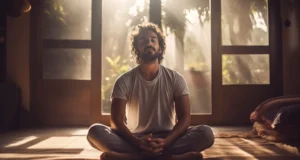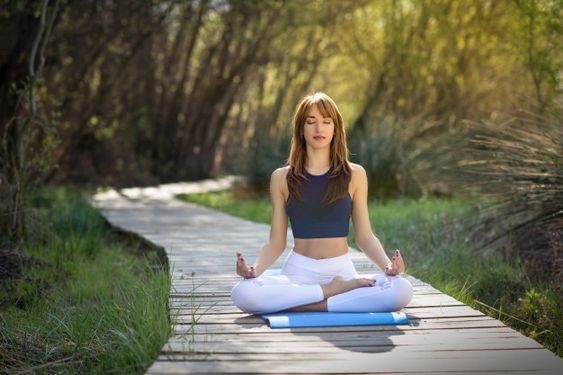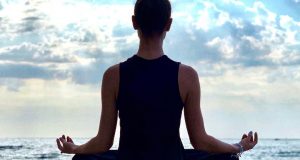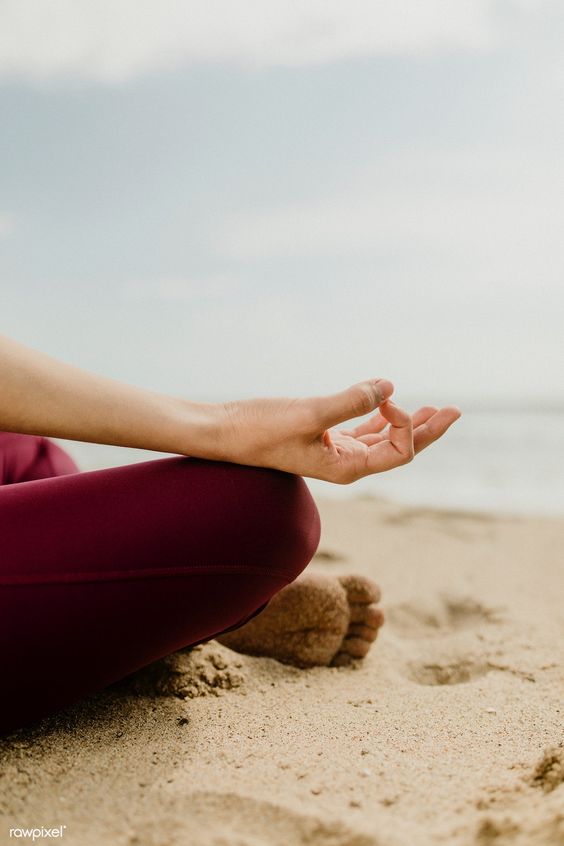
OSHO meditation is an intense, fast, and detailed means to break ingrained, old patterns in the body and mind that keep one confined in the past, as well as to practice the freedom, observing peace, and silence that is concealed behind those secure walls.
OSHO Dynamic Meditation is one of the most powerful transformative meditation breathing exercises created by Osho. It is based on a deep understanding of the connection between a person’s ability to express emotions and his mental and physical health, as well as his potential for love and creativity.
So, let’s know in detail what is OSHO meditation and how to do OSHO meditation techniques in this post below
What Is OSHO Meditation?

The OSHO Meditation practice is just being pleased in your own company; it is an enjoyment in your being. It’s very simple – a completely relaxed state of awareness where you aren’t doing anything. The minute you start doing anything, you automatically become tensed; anxiety enters instantly.
Thus, OSHO Meditation practice is just to be yourself and sit calmly, not doing anything – no emotion, no thought, no action. You just sit and relax. And it’s pure enjoyment. So, now let’s know how to do OSHO Dynamic meditation techniques in this post below
Dynamic Meditation is one of the most powerful transformative meditation techniques created by Osho Forum. It is based on a deep understanding of the connection between a person’s ability to express emotions and his mental and physical health, as well as his potential for love and creativity.
Osho Dynamic Meditation is suitable for absolutely anyone, no matter how old you are, or what weight, gender, or religion you have. Even once you try Osho’s dynamic meditation, you will feel a powerful surge of strength and energy, an increase in Serum Cortisol Level, a surge of inspiration & relaxation, positivity, and joy.
Regular practices of dynamic meditation help to get out of an emotional crisis and depression, get rid of addictions (smoking, alcohol, drugs, etc.), and heal phobias.
By practicing dynamic meditation, you will notice how the quality of your energy changes – it becomes lighter, more joyful, and more positive. Fussiness, anxiety, and restlessness disappear – spontaneity, creativity, and love open up in you. You can download the Book of Secrets Osho pdf from the online to learn more about it.
For Whom OSHO Dynamic Meditation Is Suitable?
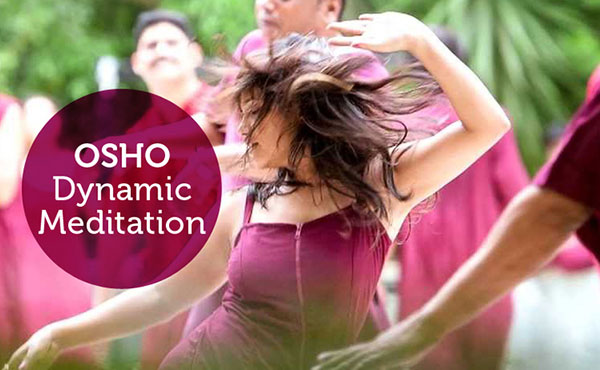
There is an opinion that Osho’s Chakra breathing is a female practice. There are no restrictions on gender, age, or any other signs in this meditation.
Women in meditation with chakra breathing are attracted by the manifested effect of opening sensuality and connecting with natural energy. For men, this format may not be suitable due to the peculiarities of temperament or due to mental limitations in interaction with emotions.
In the immersed state, the harmonization of the masculine and feminine principles inherent in each person takes place. The process proceeds smoothly, from within, without any influence induced by any text, and the subconscious is opened gradually, layer by layer.
What Are The Stages Of Dynamic OSHO Meditation?
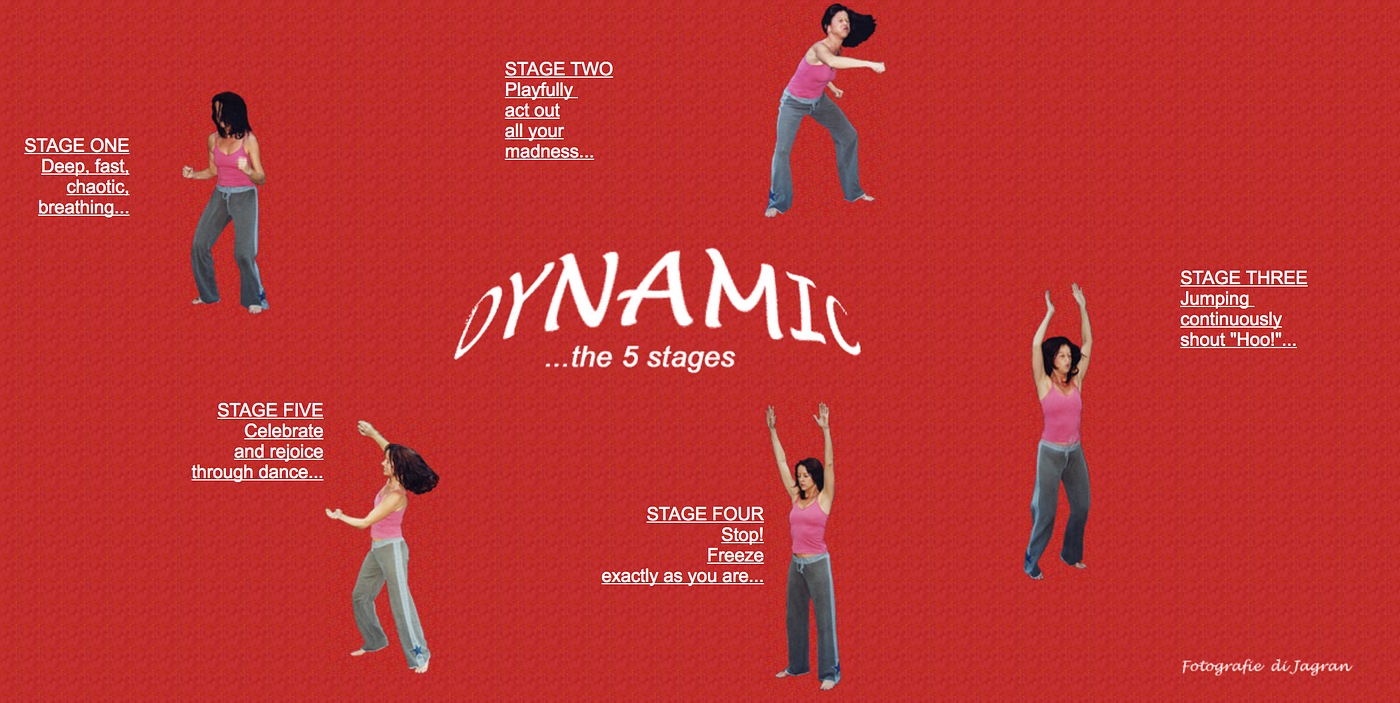
The practice should take a strictly agreed time – 1 hour, and is divided into two stages:
- Active breathing practice takes 45 minutes;
- The time of passive contemplation of internal processes takes 15 minutes.
Transitions through the stages occur with the sound of a gong. When the gong sounds three times, you return to your normal state.
An important feature is that all this time the eyes must be closed, or the room must be completely dark. Since it is almost impossible to keep the eyelids down without tension for a long time, the eyes are closed with a tight bandage.
The author’s description of the technique can be found in Osho’s book Meditation: The First and Last Freedom. Osho recommended meditating in the morning, on an empty stomach.
ACTIVE STAGE:
- Stand calmly, relax, and place your feet close to each other. Gather your attention in the first chakra, and breathe through your mouth fairly quickly and deeply. Inhalation and exhalation should be equal in strength. Feel everything that is concentrated in the chakra.
- When the signal sounds, move your attention to the second chakra while breathing even faster.
- Each time the signal is given, move up one chakra and breathe at a faster pace. By the seventh chakra, you should be breathing twice as fast as in the first step.
- The signal will sound three times in a row, and you will begin the reverse process – descending through the chakras and slowing down your breathing. Each energy center takes about two minutes. The sensations of each chakra pulsate and connect into a rainbow current.
- Stop at the first chakra, and then rise again to the top and go down.
- Repeat all over again.
In just 45 minutes, three complete respiratory cycles take place. You may want to keep moving. You can stretch, rotate slightly, and shake, but at the same time, you can’t move or even just tear off your legs.
PASSIVE STAGE:
Now it’s time to sit in a comfortable position. Relax, and allow yourself to simply observe what is happening within you. Don’t be alarmed if repressed emotions begin to surface. No need to control or evaluate them, treat yourself with understanding and love.
Comprehensive And Practical Guide of Meditation for Beginners:
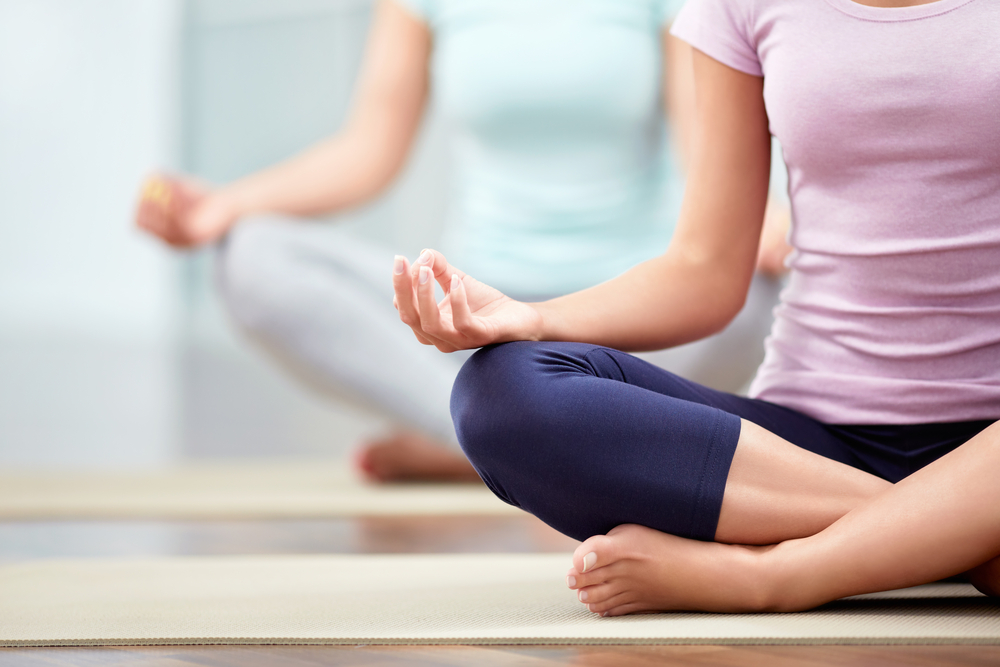
Why is meditation so popular in the world? What is the secret of meditation? What needs to be done to make the system work?
Suitable Place:
You need to choose a favorite place where no one can interrupt the process of Osho talks or meditation. It is best to meditate in the fresh air under the guidance of a spiritual teacher: on the seashore, in a park, in a forest. But you can do exercises anywhere, even at work or school.
You can meditate at home, creating a special atmosphere for this with the help of essential oils or incense sticks.
State of Cheerfulness:
How to practice meditation? Before starting the lesson, you need to awaken the internal energy in your body. This can be done by jogging in the morning, walking in the fresh air, exercising, dancing, or pronouncing incoherent sounds.
Posture, Straight Back:
The main thing in meditation is an even posture. You need to sit in the lotus position, putting your hands on your knees and lifting them to the top. It is easier for the body and mind to find peace in this position. A straight spine is an important condition during exercise, and the posture can be any.
Concentration on Breathing:
Next, you need to focus on your breathing, which will help you stay awake during meditation. It also develops concentration.
Time Doesn’t Matter:
Each person chooses the time of meditation and duration for himself. You can meditate at any time of the day or night without diminishing the benefits.
Beginners are advised to meditate at first for 10-15 minutes, and then increase the time as needed. According to Osho, the minimum meditation practice lasts 21 days.
Mindfulness:
You have to be mindful while practicing. Meditation is far from a half-asleep state, and a person should not be put to sleep. On the contrary, you need to follow each inhalation and exhalation and remain awake.
It is necessary to feel your body to further understand your innermost thoughts and emotions.
Penetrating, living meditations can solve all human problems!
Regularity of Classes:
The more regularly a person engages in this practice, the faster he will see results. You need to meditate every morning or before going to bed for at least 5 minutes, even if there is no time and desire at all.
Relaxation Process:
It is important to be able to relax and, at the same time, not pay attention to things that can distract you. At first, it will be very difficult not to be distracted by external triggers, but with experience, everything will work out.
You need to try to turn off the internal dialogue. Relaxing meditation music can help with this, listening to it will have a good effect.
Use of Mantras and Objects:
For meditation, you can use a mantra or any visual object. For example, the sound of your breathing, any melody or repetition of the same word or phrase.
As a visual object, you can choose a candle, a clock, a pendulum, beads, and so on.
Mood and Desire:
Preliminary preparation plays an important role for beginners. It would help if you prepared a place for yourself to exercise in advance and relax.
You can lie down with your eyes closed and try to calm down. Before meditation, you can stretch or do yoga, which tones the muscles and relaxes them.
Morale and a great desire to master this practice are very important.
Osho Meditation Technique:

Osho’s meditation breaks down the barriers that put a person in certain limits and fetters and gives freedom and peace. So, find Osho meditation near me and start Osho meditations and active meditations. Or you can find the Osho video online to practice Osho on pleasure.
1. Breath:
How do you normally breathe? Slow and deep or fast and shallow? Your breathing is affected by emotions and physical tension. Most of the time you can barely feel your breath.
In this practice, you gain all your strength and breathe powerfully. Breathing should be deep, intense, and fast. You don’t have to follow a specific rhythm, but make sure you focus on the exhale.
Fill your lungs with air up to a certain point. Fill your body with oxygen, and feel the energy rise in it, while you can perform any movement that you want.
2. Liberation:
Now the energy that has filled your body needs to be released. How to do this is up to you. Just relax and express yourself, you have no limits, and you are free. Dance, sing, laugh, squeal – do what you want at the moment. Let go of all your blocks and free yourself.
Do not hold back your emotions – scream or cry if you need to. Keep moving, stay active, and don’t let your mind force you to do otherwise or stop. Consciously let go of everything that has accumulated in you and feel complete.
3. Mantra:
With energy surging through your body, you may feel intoxicated. Raise your arms above your head and start jumping. At the same time, say the mantra “hu” as loudly and deeply as possible. Jump up and down, and each time you land on your feet, feel the sound in your pelvis. Force yourself and jump as much as you can. Release all your emotions and keep going until you feel empty.
4. Surveillance:
After vigorous jumping, stop in any position and do not move. Don’t worry about the position of your body. Do not move under any circumstances. A little jerk or deliberate relaxation will spoil the effect of the energy flow. Stand still like a sculpture and feel the result of this practice. Let it illuminate your body with ecstasy and understanding.
The inner workings of your body will overwhelm you and fill you with the satisfaction of being clean. Feel the love and gratitude within you. You can express your happiness by dancing and singing. Feel alive and maintain this energy throughout the day, and the next day you will be energized again with the help of Osho meditation.
Let go of the chains that bind you and express your feelings and emotions freely. Explore your inner world, become aware of it, and live a richer life. Osho meditation will allow you to go beyond your limitations and complexes, it will open you to a life filled with love and energy, in which there is no indecision.
Osho meditation practice takes about an hour. If you have not done this practice before, then it is better if you train under the guidance of a professional instructor for safer and better results. It is preferable to practice meditation in the morning alone or with a group of people.
How To Do OSHO Dynamic Meditation Techniques?

OSHO’s Dynamic Meditation is usually practiced in the morning at sunrise as per the Osho International Foundation for self-discovery. It consists of five stages, deeply connected without any physical activity.
The first stage of Dynamics is deep, frequent, chaotic breathing through the nose. “By using rapid breathing, you strike the vital body, and then that which is sleeping begins to awaken: the reservoir of your energies is opened.”
Such breathing, if you go into it completely and without a trace, sets in motion the electricity of the body and accelerates the circulation of bioenergy in the nervous system. For ten minutes you turn into a powerful pump pumping air, and all the energy spent in ordinary life on thinking, experiencing, and suppressing emotions is now directed to supporting breathing. Every cell of the body wakes up and vibrates, filled with vitality.
The tension steadily reaches its peak and finally explodes in genuine catharsis. This is the second stage of meditation: “When the body is allowed to live, all the repressions accumulated in it are discarded. This is catharsis. A person who has gone through catharsis can never become insane again; it’s impossible”.
From the outside, the cathartic (otherwise, cleansing) process may look like a visit to a madhouse during a period of exacerbation, and the more striking is the insight that exactly up to this moment the “psychiatric hospital” was inside us, controlling our thoughts, desires, and actions.
Through screaming, crying, dancing, laughter – anything can happen – layer after layer, long-forgotten, but never disappeared resentments, sadness, anger, fear, and even joy and delight, which once did not exist. given room for full and open expression and acceptance.
Start your OSHO meditation techniques by being distinct from the awareness, and by being an observer of the present moment. Among many techniques, that’s the only method of separating yourself from whatever. So, let’s now see the steps on how to do OSHO Dynamic meditation techniques
OSHO meditation lasts 1 hour and has a total of five stages. Keep your eyes completely closed throughout the practice of the five stages of OSHO meditation. If needed, you can use a blindfold to keep your eyes closed.
Stage 1: Lasts for 10 Minutes:
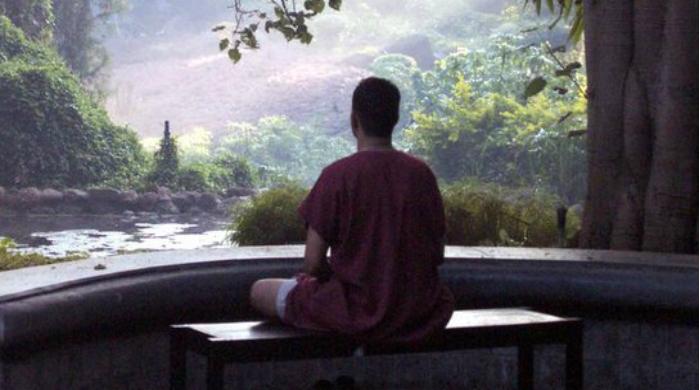
In the first stage, breathe deeply and indiscriminately through your nose. Let your breathing be deep, intense, without rhythm, fast, with no particular pattern – and always focused on your exhalation process.
Your body will pay attention to your inhalation as well throughout the meditation process. The breath should pass intensely into your lungs.
Do this as hard and as fast as you conceivably can until you factually become tired.
Use your normal body activities to aid you in boosting your energy. Feel it boosting, but do not let go throughout stage 1.
Stage 2: Lasts for 10 Minutes:

As OSHO explains, in this second stage, your whole body will explode. Let go of all that requires to be thrown out of your life. Track your body with regular practice. Give the body liberty to express whatsoever is there.
Go completely mad. Shout, scream, cry, kick, laugh, jump, shake, sing, dance; throw yourself around. Grip nothing back; retain your entire body moving.
Never permit your concentration to restrict what is going on. Consciously go crazy.
Stage 3: Lasts for 10 Minutes:

In the third stage, with your arms elevated high above the head, you can now jump up and down pronouncing the mantra, “Hoo! Hoo! Hoo!” as intensely as you can.
Each time you land, on the floor on your feet, let that sound beat profound into the sex center. Give entirely everything you have; completely exhaust yourself. Take deep breaths and stay relaxed.
Stage 4: Lasts for 15 Minutes:

Now you need to stop. Freeze any place you are, in whatever position you get yourself. Try not to organize the body in any capacity.
A hack, a development, anything, will disseminate the vitality stream and the exertion will be lost. Be an observer of everything that is transpiring.
Stage 5: Lasts for 15 Minutes:
Finally, it is time to Celebrate! With music and movement, express at all is there. Convey your aliveness with you for the day.
Best Time To Do OSHO Meditation:
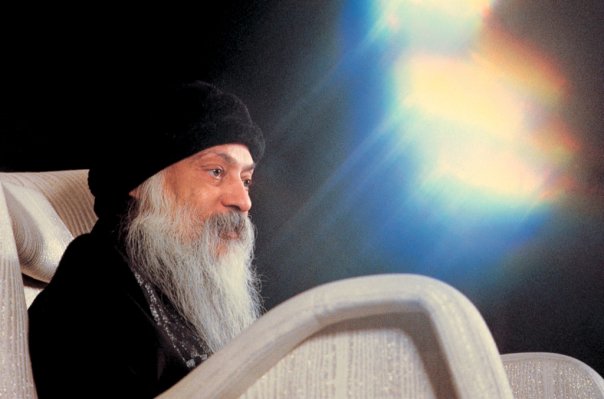 You must do the OSHO meditation practice in the early morning when the entire nature becomes thriving, the night has completely gone, the sun is rising and the whole thing becomes alert and conscious.
You must do the OSHO meditation practice in the early morning when the entire nature becomes thriving, the night has completely gone, the sun is rising and the whole thing becomes alert and conscious.
You can then OSHO meditation practice alone, however, to start the practice, it is advised to do it under the supervision of an expert or to do the meditation with other persons. It is a separate involvement, so keep it on the unconscious of others around you.
Try to wear comfortable and loose clothing. The OSHO meditation practice is recommended to do with its precise OSHO Dynamic Meditation practice music, which specifies and actively supports the dissimilar stages.
Benefits of OSHO Meditation:
Having mastered the technique and believing in yourself, everyone can meditate. After several successful sessions, a person easily finds contact with his own “I”. Proper meditation helps in this. Its benefits are as follows:
- The process calms the mind and takes away depression, fears, and aggression.
- Gets out of stressful situations in a short period.
- Meditation makes it possible to stop the meaningless life flow of fuss, to look into your soul, and inner world, and to feel your involvement in the divine.
- Increases self-esteem and improves emotional state. Gives bursts of joy and cheerfulness.
- Meditation has a positive effect on the nerves, and heart, and reduces blood pressure.
- The immune system is strengthened and you get sexual liberation.
- By meditating, a person gets rid of the craving for things, thereby simplifying his attitude to life.
- The level of awareness of one’s actions and deeds increases.
- Meditation over time teaches a person to perceive everyone as they are, to feel unity with all people, and in time to love all living things.
- Creativity develops – this is the benefit of meditation, the reviews of many talented people confirm this. Many who have experienced the meditation technique note that in this way they got out of the captivity of the past and began to appreciate life here and now.
- Meditation provides answers to many vital questions and fills existence on this earth with joy.
- By finding our own “I”, we find happiness. An open heart to the world makes us one with it.
What Are The Side Effects?
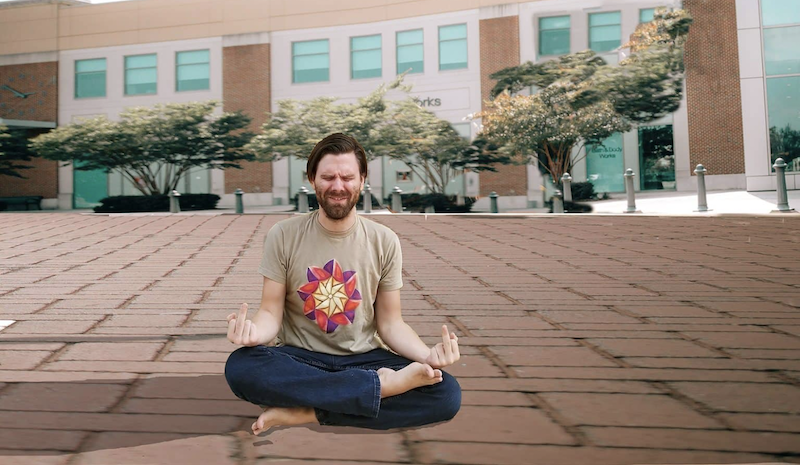
An unusual rate of breathing may cause dizziness or headache. It is not recommended to practice for pregnant women and people with an unstable psyche.
One of the technical difficulties of this meditation is that it is necessary to spend almost all the time, that is, at least forty-five minutes, standing in one place.
Oddly enough, this can be quite difficult at first. You can find recommendations to meditate lying down, but this contradicts the original idea of the author.
Physical discomfort may occur due to the need to breathe through the mouth. You need to be ready to let go of the feeling of dryness in your mouth and throat so that your body can deal with it.
To feel the chakras, you need either independent theoretical training or the participation of a mentor. Some find it easier to practice in a group, but there are those for whom only individual work is suitable.
Osho himself said that the practices he created work while he was with his followers, and after his death, they will be distorted. Any interpretation bears the imprint of the teacher’s personality, so before joining a group of practitioners, learn as much as possible about the master.
BOTTOM LINE:
This is a meditation method where you must be constantly ready, cognizant, and mindful, in all you do in the present moment. Stay an observer during your meditation practices. What’s more, when – in the fourth stage of practicing meditation – you have gotten idle, and solidified, at that point, this readiness will go to its pinnacle.
The central OSHO dynamic meditation’s effect is to cleanse our unconscious from a mass of repressed emotions accumulated over the years: fear, pain, anger, despair, disappointment, jealousy, shame, guilt, regret, sadness, self-doubt, and so on. Left untouched, these layers of emotions poison your energy system, creating blocks through which energy stops flowing.
As per the clinical and diagnostic research, sooner or later, this leads to chronic diseases and decrepitude with chaotic breathing while sitting silently. The connection between blocked emotions and autoimmune diseases, diseases of the joints, heart, liver, throat, and mental disorders (anorexia and bulimia, manic-depressive psychosis, schizophrenia, epilepsy, depression, etc.) has already been scientifically proven to have a significant decrease.
So, with the help of the proper OSHO Dynamic Meditation technique, pure consciousness, you can bring inner silence, inner peace, reduce stress, etc.
FAQ:

Q. How long should I meditate, Osho?
A. Osho Dynamic Meditation declares, “You’ll have to go into meditative moments deliberately. If an individual isn’t meditating for at least 1 hour per day, then neurosis won’t be accidental, the person will create it themselves. For 1 hour you must disappear from this chaotic world into the person’s being.
Q. How do you meditate according to Osho?
A. Do not do anything – don’t repeat mantras, don’t repeat God’s name – simply watch whatever your mind is doing. Do not disturb your mind, do not prevent the mind, do not repress your mind; do not do anything on your part at all. You simply be a spectator and enjoy the miracle of this meditation.
Q. Who was Osho cult leader?
A. Rajneesh (December 11, 1931 – January 19, 1990) was the Oregon cult leader of Osho meditation. He is also famous as Bhagwan Shree Rajneesh, Acharya Rajneesh, and Rajneesh Osho. He was an Indian philosopher, Godman, and also the founder of the Rajneesh movement.
Q. Can I get Osho pdf online?
A. It is better to get an Osho ashram booking instead of downloading any random Osho PDF or Osho orange book to practice Osho meditation. Osho night meditation in Hindi will also be effective for you if you want to learn about meditation in Hindi.
Q. Was Ma Anand Sheela accused of a murder attempt?
A. Ma Anand Sheela, the personal secretary of Acharya Rajneesh, pleaded guilty to accusations of assault and attempted murder.
Q. What made the Rajneesh movement decline?
A. Several events that caused a decline of the Rajneesh movement happened in The Dalles, the largest city of Wasco County in Oregon. It also affected residents of tiny towns in Oregon.
Q. Who is the writer of OSHO: The Buddha for the Future?
A. Maneesha James is the writer of OSHO: The Buddha for the Future. It is an Osho philosophy book for Osho on samadhi that Maneesha shares with his disciples. You can buy this book from Amazon. However, we could not find any Osho books in free PDF.
Q. Who is Anna Freud?
A. Anna and Sigmund Freud are the founders of Osho Sammasati, which is a platform bringing meditation to life. Meeting Anna Freud, you will understand how useful meditation is for you.
More Recommended Articles:-

